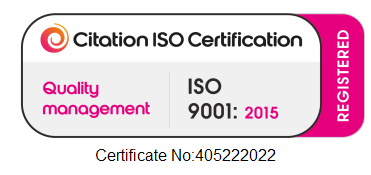Background
We were requested by our international retailer client to provide help developing the customer satisfaction scores for their JLR (Jaguar Land Rover) businesses. The business was achieving Customer satisfaction results (CSI) lower than they felt comfortable with and had identified this as a key area for business retention, growth, and enhanced profitability.
The approach was to help them identify customers who had a positive customer experience along with verbatim comments for staff recognition, those that had a marginal experience and whose experience could be influenced by a token action by our client and to identify ‘red flag’ relationships for senior management to deal with.
They aimed to foster stronger customer relationships, gather feedback, and address any concerns promptly. To achieve this, they initiated a project to conduct outbound customer satisfaction telephone calls.


Objectives
1. Measure Customer Satisfaction: To understand excellent, marginal and red flag customer experiences and to provide tangible feedback to the dealerships in the form of verbatim comments and statistical analysis.
2. Gather Feedback: By categorising the feedback into Red, Amber and Green groups the dealership management could quickly identify the severity of the issue. This then combines with the JLR Service Six process they could pinpoint the department to deal with the issue and to identify any developing trends and benefit from progression. This process has significantly contributed to higher manufacturer satisfaction scores and an improved customer experience.
3. Enhance Customer Loyalty: The Green scores undoubtedly had a higher propensity to conduct repeat business with our client, to act as a good ambassador and to report the dealer in high regard through the manufacturer’s CSI programme. The Amber customers offered an opportunity to change their perception of the dealership through management actions and the Red coded customers became a management priority in order to retain the customer and underpin the manufacturer’s CSI scores.
4. Resolve Issues: While it is always better to deliver a fantastic experience to the client there are occasions when this does not happen. This program has acted as a safety net in those situations
Implementation

Data collection

Data uploaded into our CCPro contact centre software

Data fields checked and deduplicated
Call Script Development
- Developed a comprehensive call script covering key questions about customer satisfaction.
- Calls recorded and the Dealership Management retain the right to listen to all and any of the calls.
- Trained representatives to conduct calls professionally and empathetically.
- Training and implementation of the JLR Service Six process.
Call Execution:
- Dedicated a team of skilled customer service representatives to make outbound calls.
- Scheduled calls during non-intrusive hours to maximize response rates.
- Call attempts rotated to facilitate contact.
Feedback Analysis:
- Recorded customer responses and feedback.
- Collated and analysed data to identify common themes and issues.
- Provided call recordings as required.
Issue Resolution:
- Established a streamlined process for addressing customer concerns.
- Tracked issue resolution and reported back to customers.
Outcomes

Enhanced Customer Satisfaction
Outbound calls led to a better understanding of customer needs and preferences, resulting in an increase in overall satisfaction ratings.

Feedback-Driven Improvements
The feedback gathered from calls drove service process improvements, leading to a more competitive business.

Improved Customer Loyalty
Proactive engagement and issue resolution improved customer loyalty, resulting in higher customer retention rates, improved manufacturer CSI results and associated payments.

Reduction in Negative Reviews
Fewer negative online reviews were noted, showcasing the positive impact of addressing customer concerns promptly.
Measurable Results
Customer Satisfaction
Customer satisfaction scores increased by 15% within the first six months of the outbound calling initiative.
Process Improvements
Several process improvements were directly attributed to feedback from the calls.
Customer Retention
Customer churn rate decreased reflecting improved customer loyalty and retention.
Online Reviews
Negative online reviews decreased by 20%, while positive reviews increased by 10%.
Conclusion
Our client’s initiative to make outbound customer satisfaction telephone calls has proven to be an effective strategy for improving customer satisfaction, gathering valuable feedback, and enhancing customer loyalty.
By actively engaging with their customers and addressing their concerns, our client has not only improved customer satisfaction but also positively impacted their bottom line through process enhancements and increased customer retention.
This case study serves as a model for other businesses seeking to boost their customer satisfaction and loyalty.
Lessons Learned
- Regular communication with customers is vital for maintaining and improving satisfaction.
- Timely issue resolution is crucial in building trust and loyalty.
- Compliance with data protection regulations is non-negotiable.



